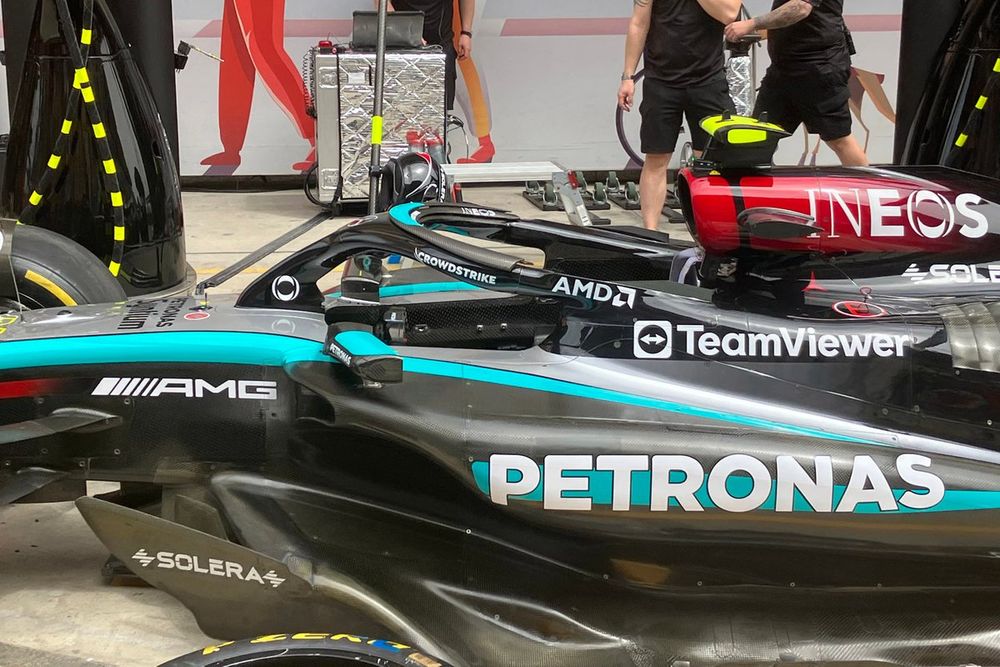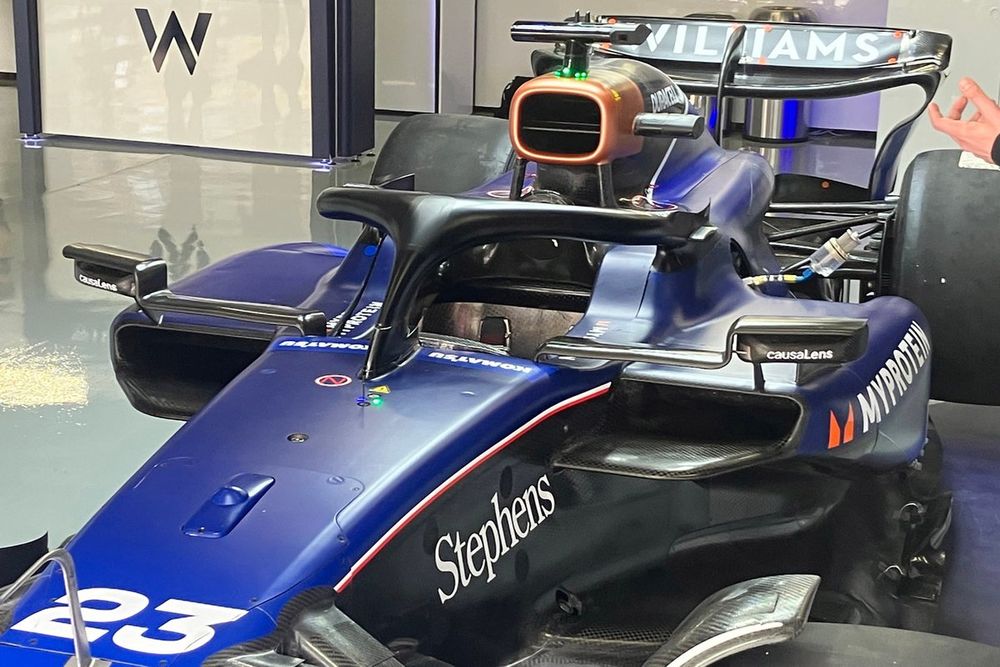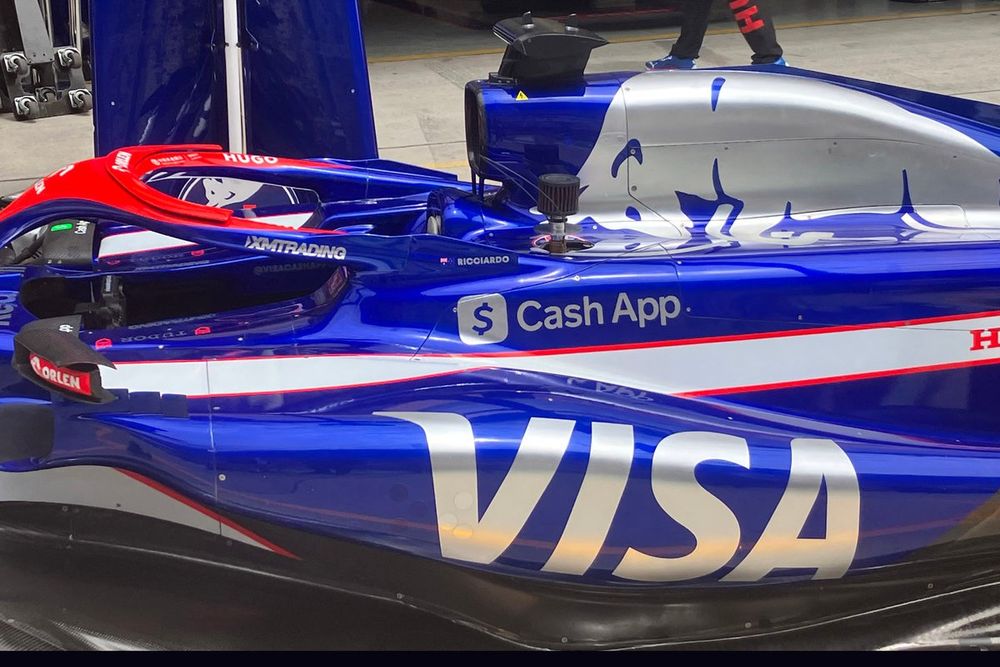While teams are often reluctant to introduce major development packages for sprint race weekends, because of limited track running, it does not prevent them seeking gains in other ways.
And interestingly, in the team submissions lodged with the FIA for this weekend’s race in Shanghai, three outfits have made revisions to the area surrounding the driver and cockpit area.
RB F1 Team VCARB 01 halo detail
Photo by: Jon Noble
At RB, it has reshaped the headrest behind the drivers’ helmet to help better manage the airflow separation in this area, which should have benefits further downstream.
At Mercedes and Williams, the changes have come to the halo area, which is also aimed at cleaning up airflow.

Mercedes F1 W15 halo detail
Photo by: Jon Noble
Mercedes has added a small flick either side of the cockpit behind the Halo.
The idea is that these tweaks help generate small vortices to help control flow out of the cockpit, which then sets the air up much better as it heads towards the rear wing.

Williams FW46 halo detail
Photo by: Jon Noble
For Williams, the geometry at the forward part of the halo has been adjusted to increase the angle of attack.
This helps tidy up the airflow around the halo and better controls losses that it has noticed within the cockpit area.
The benefits of doing so should be in improving the airflow to the rear and beam wing, which then boosts aerodynamic efficiency.
Williams head of vehicle performance Dave Robson said that while the changes seemed relatively minor in the grand scheme of things, the cockpit area was quite critical in terms of distributing airflow better around the rest of the car.
That is why he reckoned it was intriguing that other teams had also introduced changes here on the same weekend.
“It is an important area,” he said. “I saw that [FIA submission] list this morning and I was quite surprised by the coincidence of it.
“But in our case, we did some flow vis on our Halo shroud a couple of races ago, and saw a few aspects of the flow we didn’t like. That is what inspired us to improve the flow, take the cockpit losses and just make sure they end up in the right part at the back of the car.”
Robson felt that there were two critical factors at play with teams bringing upgrades in this area: it showed that details mattered more, and they were also something that could be done cheap and quickly.
“It is just one of those incremental changes that you need to…
Click Here to Read the Full Original Article at Motorsport.com – Formula 1 – Stories…

